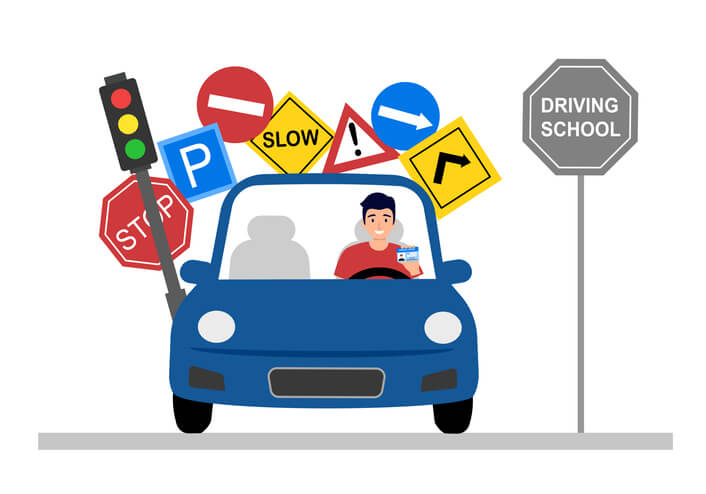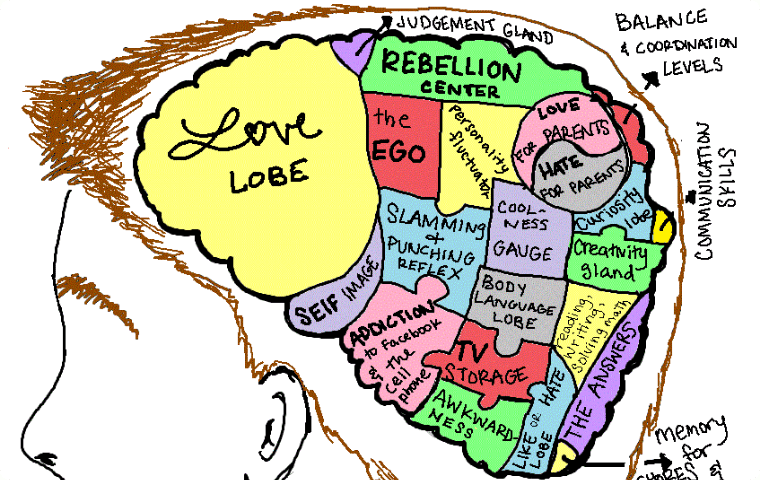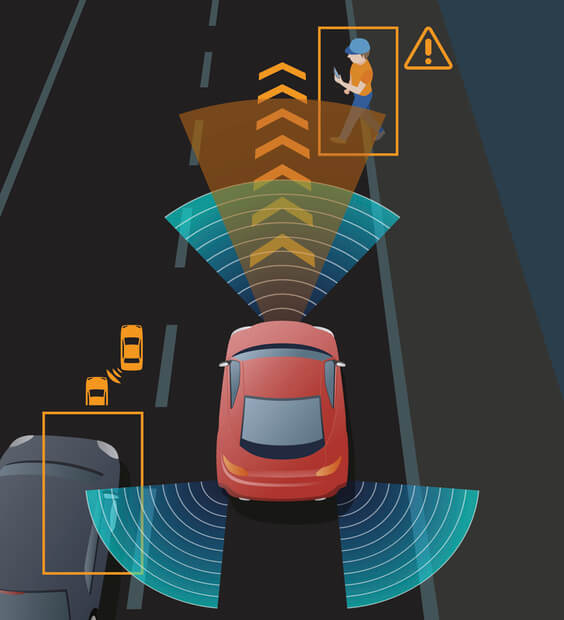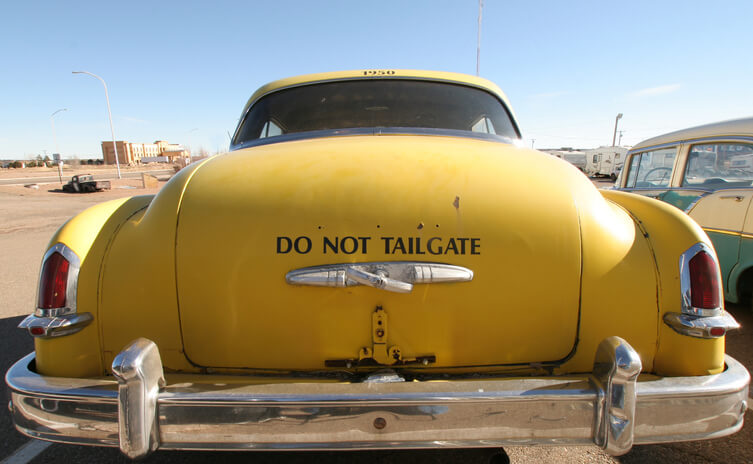Preparing for your driving test is as much about mastering the mechanics of driving as it is about adopting a constant awareness and safety mindset. Whether you’re a nervous first-timer or just brushing up on your skills, here’s an expanded guide to help you excel on test day and beyond.
- Start Here
- Traffic Safety Research
-
Top Driving Schools

-
Get Your Driver License

-
How to Get a License in Your State

- Alabama
- Alaska
- Arizona
- Arkansas
- California
- Colorado
- Connecticut
- Delaware
- District of Columbia
- Florida
- Georgia
- Hawaii
- Idaho
- Illinois
- Indiana
- Iowa
- Kansas
- Louisiana
- Maine
- Maryland
- Massachusetts
- Michigan
- Minnesota
- Mississippi
- Missouri
- Montana
- Nebraska
- Nevada
- New Hampshire
- New Jersey
- New Mexico
- New York
- North Carolina
- North Dakota
- Ohio
- Oklahoma
- Oregon
- Rhode Island
- South Carolina
- South Dakota
- Tennessee
- Texas
- Utah
- Vermont
- Virginia
- Washington
- West Virginia
- Wisconsin
- Wyoming
-
State Driving Laws

-
Permit Practice Tests

- Alabama
- Alaska
- Arizona
- Arkansas
- California
- Colorado
- Connecticut
- Delaware
- District of Columbia
- Florida
- Georgia
- Hawaii
- Idaho
- Illinois
- Indiana
- Iowa
- Kansas
- Louisiana
- Maine
- Maryland
- Massasschusetts
- Michigan
- Minnesota
- Mississippi
- Missouri
- Montana
- Nebraska
- Nevada
- New Hampshire
- New Jersey
- New Mexico
- New York
- North Carolina
- North Dakota
- Ohio
- Oklahoma
- Oregon
- Pennsylvania
- Rhode Island
- South Carolina
- South Dakota
- Tennessee
- Texas
- Utah
- Vermont
- Virginia
- Washington
- West Virginia
- Wisconsin
- Wyoming
-
DMV Handbooks

- Alabama
- Alaska
- Arizona
- Arkansas DMV Handbook
- California Driver’s Handbook
- Colorado
- Connecticut DMV Drivers Handbook
- Delaware
- District of Columbia
- Florida
- Georgia
- Hawaii
- Idaho Driver’s Handbook
- Illinois
- Indiana
- Iowa
- Kansas
- Louisiana
- Maine
- Maryland
- Massachusetts
- Michigan
- Minnesota
- Mississippi
- Missouri
- Montana DMV Drivers Handbook
- Nebraska
- Nevada
- New Hampshire
- New Jersey
- New Mexico
- New York
- North Carolina
- North Dakota
- Ohio
- Oklahoma DMV Handbook Drivers Manual
- Oregon
- Rhode Island
- South Carolina
- South Dakota
- Tennessee DMV Driver’s Handbook
- Texas
- Utah
- Vermont
- Virginia
- Washington
- West Virginia
- Wisconsin
- Wyoming
-
Find Online Driver’s Ed

- Find a Driving School
-
How to Get a License in Your State
-
What is S.P.I.D.E.R?

- Traffic Safety Research
-
Top Driving Schools

-
Get Your Driver License

-
How to Get a License in Your State

- Alabama
- Alaska
- Arizona
- Arkansas
- California
- Colorado
- Connecticut
- Delaware
- District of Columbia
- Florida
- Georgia
- Hawaii
- Idaho
- Illinois
- Indiana
- Iowa
- Kansas
- Louisiana
- Maine
- Maryland
- Massachusetts
- Michigan
- Minnesota
- Mississippi
- Missouri
- Montana
- Nebraska
- Nevada
- New Hampshire
- New Jersey
- New Mexico
- New York
- North Carolina
- North Dakota
- Ohio
- Oklahoma
- Oregon
- Pennsylvania
- Rhode Island
- South Carolina
- South Dakota
- Tennessee
- Texas
- Utah
- Vermont
- Virginia
- Washington
- West Virginia
- Wisconsin
- Wyoming
-
State Driving Laws

-
Permit Practice Tests

- Alabama
- Alaska
- Arizona
- Arkansas
- California
- Colorado
- Connecticut
- Delaware
- District of Columbia
- Florida
- Georgia
- Hawaii
- Idaho
- Illinois
- Indiana
- Iowa
- Kansas
- Louisiana
- Maine
- Maryland
- Massasschusetts
- Michigan
- Minnesota
- Mississippi
- Missouri
- Montana
- Nebraska
- Nevada
- New Hampshire
- New Jersey
- New Mexico
- New York
- North Carolina
- North Dakota
- Ohio
- Oklahoma
- Oregon
- Pennsylvania
- Rhode Island
- South Carolina
- South Dakota
- Tennessee
- Texas
- Utah
- Vermont
- Virginia
- Washington
- West Virginia
- Wisconsin
- Wyoming
-
DMV Handbooks

- Alabama
- Alaska
- Arizona
- Arkansas DMV Handbook
- California Driver’s Handbook
- Colorado
- Connecticut DMV Drivers Handbook
- Delaware
- District of Columbia
- Florida
- Georgia
- Hawaii
- Idaho Driver’s Handbook
- Illinois
- Indiana
- Iowa
- Kansas
- Louisiana
- Maine
- Maryland
- Massachusetts
- Michigan
- Minnesota
- Mississippi
- Missouri
- Montana DMV Drivers Handbook
- Nebraska
- Nevada
- New Hampshire
- New Jersey
- New Mexico
- New York
- North Carolina
- North Dakota
- Ohio
- Oklahoma DMV Handbook Drivers Manual
- Oregon
- Pennsylvania
- Rhode Island
- South Carolina
- South Dakota
- Tennessee DMV Driver’s Handbook
- Texas
- Utah
- Vermont
- Virginia
- Washington
- West Virginia
- Wisconsin
- Wyoming
-
Find Online Driver’s Ed

- Find a Driving School
-
How to Get a License in Your State
-
What is S.P.I.D.E.R?


















